My meetings with Prime Minister Desai when he was out of power
Category:
Tags:
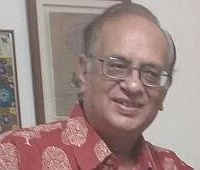
Subhash Mathur is a resident of Jaipur after superannuation from Indian Revenue Service in 2007. Presently, Subhash is engaged in social and charitable work in rural areas. Subhash is also Editor of http://www.inourdays.org/, an online portal for preserving work related memories.
I had the privilege of driving Morarji Desai, India's future Prime Minister, when I was a young college student in Jaipur.
Humiliated by Prime Minister Indira Gandhi's decision to take away his Finance Ministry portfolio without consulting him, and disagreeing strongly with her decision to nationalise the fourteen biggest banks in India, he resigned from his position as Deputy Prime Minister on 16 July, 1969.
My father, Shri Khem Chand, had retired from the Indian Administrative Service (IAS) in April 1969. In his retirement, he was looking for ways to keep himself busy. (He passed in 2004).
A civil servant before he turned politician, Morarji Desai kept up a regular postal correspondence with my father. I, and my siblings, typed Daddy's letters on a portable, manual typewriter that we had bought from a foreign scholar who had come to Jaipur.
We do not have the letters my father wrote to Morarji, as he was commonly called. However, we have two letters written by Morarji to my father in 1970.
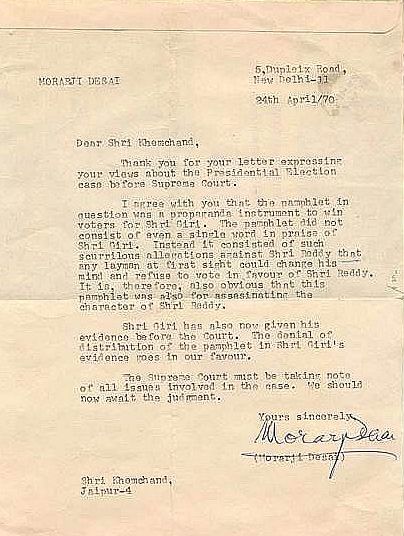
Morarji Desai's letter dated 24 April 1970 to Shri Khem Chand, my father.
My father replied to this letter, as indicated by Morarji's letter below.
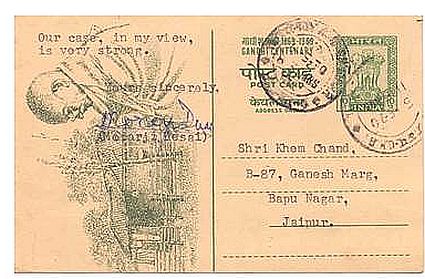
Front of Morarji Desai's postcard letter dated 2 May 1970 to Shri Khem Chand, my father.
The sentence at the top of the left-hand side is a continuation of the letter on the back side below.

Back of Morarji Desai's postcard letter dated 2 May 1970 to Shri Khem Chand, my father.
In the months following his resignation, Morarji Desai decided to visit Jaipur and agreed to meet my father during the visit. My father designated my oldest brother, called Titi, and me to receive Morarji Desai on his arrival at the Jaipur railway station.
Our family car at the time was a Hillman Minx, a British middle-sized family car. Luxurious compared to similar modern Indian cars, its seating comfort was superior.
If and when the Hillman moved (that's too long a story to be included here), it provided a very cool driving experience!
Daddy bought the car in Bikaner but it was registered in Ajmer, where he was posted as Collector from September 1957 to July 1958. In those days, license plate numbers of cars consisted of three parts. The first part was two letter that indicated the state where the vehicle was registered\; in our case, "RJ" for Rajasthan. The next part consisted of one letter that identified the district. Since Ajmer was the last district to join Rajasthan, it was designated "Z". The third and last part consisted of a 4-digit number unique to each plate - but some cars were exempt from the 4-digit rule.
The Commissioner, the highest ranking office in the area, of Ajmer Division was allotted licence plate RJZ 1 for his car. Daddy, who was number two as Collector Ajmer, got RJZ 2.
The number plate did not change later, even after we moved out of Ajmer to Jaipur.
The single digit number "2" signified that the car was a VIP vehicle. No traffic cop ever stopped the car\; in fact the car was in fact given priority clearance
In 1961, we moved into a house called Jwala Bhavan in C-Scheme, Jaipur. The Hillman used to be parked in the garage, whose entry was from the side street. The garage was so placed that it was a piece of cake parking the car bonnet first but getting the car out needed a new skill set. There was no room for error of even one inch. The path had to be ramrod straight. This skill set always came in handy in later years.
While the car was parked, it was a bit boxed in with difficulty in opening the doors fully but in those days no one ever complained.
I started driving the Hillman during my school days, which ended in 1964, but got my driving license in 1966. My brothers and I learnt how to drive the car from Sadiq mian (a term of respect), Daddy's driver. As my brother Subodh often remembers, when Sadiq mian was teaching driving, he used to say, "भैय्या जी, जल्दी का काम शैतान का |", meaning "Speed is the work of the devil." He believed in getting to the destination safe and sound - no rushing to get there! Much later, Subodh related this story to his son, Abhijai, when he was learning to drive.
When Morarji Desai arrived at Jaipur, Titi and I drove to the railway station in the Hillman to receive him. To everyone's surprise his hosts, the Kamanis, failed to turn up. (Perhaps we should not have been surprised. In those days, since Morarji Desai was out of favour with Indira Gandhi and the Congress party, he was practically an outcaste.)
So with Morarji Desai gracing the back seat of Hillman, I drove to the Kamani palatial house in C-Scheme near Statue Circle.
After I finished college, I joined the civil service in the Customs and Central Excise Department under the Department of Revenue, Ministry of Finance. The day after my joining day, 4 November 1971, Daddy surprised me by meeting me at my training Institute in Hauz Khas, New Delhi. After meeting my Director and other senior officials, he persuaded me to go with him and Lal dada, one of our relatives, to Morarji Desai's house.
We met Morarji Desai, who was still out of power at that time, for about 10 minutes. He mentioned to me that he was unhappy with the dilution of the Gold Control measures introduced by him in 1962, in the wake of the Sino-Indian conflict of 1962. (Later, the administration of gold control policy came to Customs and Central Excise Department and remained so until revoked in 1990 by then Finance Minister Madhu Dandvate.)
Morarji became India's Prime Minister in 1977. We do not have any letter that he many have written to my father then or later.
Update November 2018: an interesting development to my story
When I wrote this story titled ‘My meetings with Prime Minister when he was out of power', I least expected many people to read it. By and large, my estimate turned out to be accurate. After all, Morarji was not the most popular politician in India at any point of time. But he was a firm administrator.
Thus to my utter surprise I received an email (included below) from Purabi Shridhar, a former editor of Femina who was writing her second book with her journalist colleague, Sanghita Singh. Their book looks at Indian Prime Ministers from Nehru to Modi, beyond their public persona, and explores the human angle. They asked me for a telephonic interview.
I agreed! The interview was held on 6th October 2018.
The interview generally revolved around the demeanour of Morarji from the time my elder brother Prakash and I met him at the Jaipur platform. We were standing outside his First Class railway compartment.
It was very surprising that Morarji had travelled all alone without an aide. He was already 70 plus in 1969 but stood tall and erect.
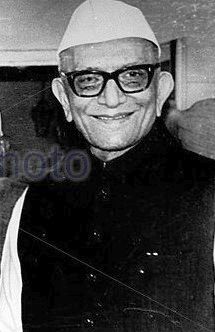
Morarji Desai. Undated stock photo.
The next surprise was that the Kamanis, his hosts, had not turned up to receive Morarji Bhai.
Morarji was so relieved to see that Khem Chandji had sent the two of his sons to receive him.
Otherwise he would have had to hire an auto or a human pulled rickshaw to reach the posh ship-like residence of the Kamanis located near the Statue Circle, the best street of Jaipur.
The interview went (more or less) like this.
Purabi wanted the following details.
Was Morarji accompanied by an aide?
No. He came all alone.
(Purabi is so surprised.)
Did Morarji get annoyed when he did not see the hosts on the platform ?
No, not annoyed. No. But surprised, yes. He showed no emotion at all. But relief showed on his face when we stepped forward and introduced ourselves.
He greeted us with Namaste, a smile.
Who drove the car?
I drove our Hillman car with elder brother Prakash on the front passenger seat, and Morarji at the back.
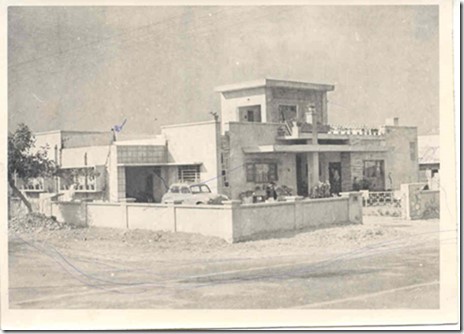
Our Hillman car, parked in our home at B-87, Ganesh Marg, Jaipur. Mid-1960s.
How far was the host residence from the station?
Kamani House was nearly three miles from the station. It took us ten minutes to reach the ship-shaped Kamani House
Did Morarji say anything during the car ride?
No. He sat quietly as the Hillman purred on to Kamani House.
Did anyone receive Morarji at the Kamani House?
No. No one from the family was waiting at the entrance to receive him.
How did Morarji enter the house?
When we rang the bell, an orderly came out and escorted Morarji into the house.
Did he say anything to us brothers before entering the house?
No , he just smiled, folded his hands in Namaste, and nodded again in thanks.
And entered the house.
What did we do after that?
We drove back home and related everything to our father, Khem Chandji.
Did I have anything further to do with Morarji during this trip?
No. That was the last of the interaction. Apparently, Morarji had no public appearance fixed during the trip.
Then Purabi's questioning shifted to relations between Morarji bhai and my father.
How did your father know Morarji bhai?
I had no clue on it as till April 1969, my father, an IAS officer, was in government service. Morarji was ousted from the government in July 1969. Thus the correspondence between the two could have started only after Morarji left the government in July 1969. And he was visiting Jaipur in October 1969. But some rapport did develop between the two.
Was there any earlier contact between the two before your father retired in April 1969?
My father was never posted to Delhi with central government. He may have met Morarji at some conference, etc. But an extended contact could easily be ruled out as my father did not like staying on in Delhi beyond necessary.
Do you have any correspondence to back up Morarji visit?
No. Whatever correspondence we had we have already posted along with the story. The correspondence establishes regular postal contact between the two.
Then, Purabi switched over to the second meeting with Morarji bhai on 4th November 1971.
The meeting is mentioned in the story.
Around what time did you meet Morarji on 4th November 1971?
After finishing my joining formalities at the Training Institute in Green Park, New Delhi, my father, my Uncle Lal dada, and I left the Training Institute around 11.30 am, and reached Morarji's house before 12 noon.
He called us in immediately.
For how much time did we meet Morarji on 4th November 1971?
The meeting lasted for about 10 minutes.
Where did Morarji live in Delhi?
Morarji was still living in his official residence in Lutyen's New Delhi.
Where did Morarji meet us in his house?
In his drawing room. Morarji was sitting on the floor on a white sheet covered ‘masnad' with round pillows on the floor. My father, uncle and I also sat down on the ground nearby.
What did Morarji say?
Initially, Morarji talked to my father about the political developments. And the political turmoil that was happening by the minute. It was the changeover of the era from the Old Guard to the Young Turks. Morarji and associates like Atulya Ghosh and S. K. Patil were feeling the heat.
He then turned his attention towards me. On learning that I had joined Customs and Central Excise service, he lamented the fact that his tough Gold Control measures had been diluted substantially. The tough gold control regime was introduced by Morarji as Finance Minister after the debacle on the Sino Indian border in 1962.
He was very unhappy about it.
What happened next?
The meeting lasted about 10 minutes and then we were escorted out. I went back to the Training Institute.
My overall impression about Morarji bhai from these two meetings was that:
Morarji bhai was in good health and maintained very simple habits. He walked ramrod straight and said very little.
But always wore a wry smile.
He was in the stoic mould. Spoke little but was critical of the upsetting of the apple cart by Indira Gandhi.
I then mentioned to Purabi about my two meetings in 2004 and 2005 with Narendra Modi at Ahmedabad when he was Chief Minister of Gujarat.
Purabi was very interested in knowing all the details.
This is how the two face to face meetings came about.
Mr. Modi, as Gujarat CM, used to invite senior officers from all Central Government Departments every year, post Diwali, for a get together over high tea at the Circuit House.
This included Customs and Excise, Income Tax, Postal Department, Metrological department, IB, CBI, and so on. Usually about 20 of us gathered for these meetings.
Modi interacted with each one of us individually. For about 3 to 5 minutes.
His two questions used to be:
Are you facing any difficulties in functioning in Gujarat?
No issues with our department.
My feedback: Our Department received excellent cooperation from all concerned in the State govt.
Do you have any other feedback for my ears?
On each occasion, I had some feedback to give him. He heard me out with rapt attention and always asked for supplementary information.
Was any action taken on the feedback given by us?
What can I say?
Email from Purabi
Dear Mr Mathur,
Namaste!
My name is Purabi Shridhar, former editor (North) Femina, Delhi. I am now working on second book with a journalist colleague, Sanghita Singh. The book s an attempt to look at the Indian Prime Ministers (from Nehru to Modi) beyond their political and public persona and explore the human facet. As, we have been meeting family members, friends, colleagues, associates, staff etc.
I am writing this mail as I read an interesting article that you wrote on your webzine about you and your brother going to receive the late Morarji Desai at Jaipur Airport. I would be grateful if you could talk about it in details. Please kindly let me know if I do a telephonic or email interview with you on the same. Or if you are based in Delhi, we would do it across the table. I would be grateful if you could kindly provide me your telephone number.
© Subhash Mathur 2016 and 2018
Editor's note\; For an account of Morarji's visit to an Indian Navy's ship when he was Prime Minister, see Morarji's Visit to INS Shakti.
Comments
Add new comment